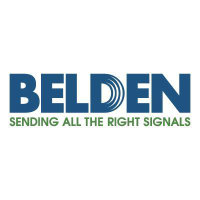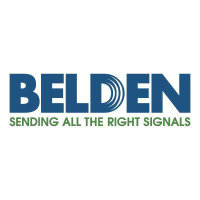
Belden Inc
NYSE:BDC


| US |

|
Johnson & Johnson
NYSE:JNJ
|
Pharmaceuticals
|
| US |

|
Berkshire Hathaway Inc
NYSE:BRK.A
|
Financial Services
|
| US |

|
Bank of America Corp
NYSE:BAC
|
Banking
|
| US |

|
Mastercard Inc
NYSE:MA
|
Technology
|
| US |

|
UnitedHealth Group Inc
NYSE:UNH
|
Health Care
|
| US |

|
Exxon Mobil Corp
NYSE:XOM
|
Energy
|
| US |

|
Pfizer Inc
NYSE:PFE
|
Pharmaceuticals
|
| US |

|
Palantir Technologies Inc
NYSE:PLTR
|
Technology
|
| US |

|
Nike Inc
NYSE:NKE
|
Textiles, Apparel & Luxury Goods
|
| US |

|
Visa Inc
NYSE:V
|
Technology
|
| CN |

|
Alibaba Group Holding Ltd
NYSE:BABA
|
Retail
|
| US |

|
JPMorgan Chase & Co
NYSE:JPM
|
Banking
|
| US |

|
Coca-Cola Co
NYSE:KO
|
Beverages
|
| US |

|
Walmart Inc
NYSE:WMT
|
Retail
|
| US |

|
Verizon Communications Inc
NYSE:VZ
|
Telecommunication
|
| US |

|
Chevron Corp
NYSE:CVX
|
Energy
|
Utilize notes to systematically review your investment decisions. By reflecting on past outcomes, you can discern effective strategies and identify those that underperformed. This continuous feedback loop enables you to adapt and refine your approach, optimizing for future success.
Each note serves as a learning point, offering insights into your decision-making processes. Over time, you'll accumulate a personalized database of knowledge, enhancing your ability to make informed decisions quickly and effectively.
With a comprehensive record of your investment history at your fingertips, you can compare current opportunities against past experiences. This not only bolsters your confidence but also ensures that each decision is grounded in a well-documented rationale.
Do you really want to delete this note?
This action cannot be undone.

| 52 Week Range |
87.1
133.49
|
| Price Target |
|
We'll email you a reminder when the closing price reaches USD.
Choose the stock you wish to monitor with a price alert.

|
Johnson & Johnson
NYSE:JNJ
|
US |

|
Berkshire Hathaway Inc
NYSE:BRK.A
|
US |

|
Bank of America Corp
NYSE:BAC
|
US |

|
Mastercard Inc
NYSE:MA
|
US |

|
UnitedHealth Group Inc
NYSE:UNH
|
US |

|
Exxon Mobil Corp
NYSE:XOM
|
US |

|
Pfizer Inc
NYSE:PFE
|
US |

|
Palantir Technologies Inc
NYSE:PLTR
|
US |

|
Nike Inc
NYSE:NKE
|
US |

|
Visa Inc
NYSE:V
|
US |

|
Alibaba Group Holding Ltd
NYSE:BABA
|
CN |

|
JPMorgan Chase & Co
NYSE:JPM
|
US |

|
Coca-Cola Co
NYSE:KO
|
US |

|
Walmart Inc
NYSE:WMT
|
US |

|
Verizon Communications Inc
NYSE:VZ
|
US |

|
Chevron Corp
NYSE:CVX
|
US |
This alert will be permanently deleted.
Belden Inc
Nestled in the heartlands of networking and connectivity, Belden Inc. has etched its name in the annals of communication solutions, representing an integral pillar in the transmission of data. With a legacy that stretches back over a century, Belden’s evolution mirrors the technological advancements of the connectivity industry. The company specializes in designing, manufacturing, and marketing signal transmission products, focusing on dependable networking, connectivity, and cable solutions. These innovations cater to a range of sectors, including industrial, enterprise, and broadcast markets. Driven by its commitment to reliability, Belden addresses the critical needs of its customers who rely on seamless data transmission for their operations.
Belden generates revenue by offering a diverse portfolio that spans fiber optics, copper cables, connectivity components, and networking equipment. Its business model is rooted in the ability to adapt to the rapid advancements in technology, ensuring robust infrastructure for its clients. The company leverages its global presence to tap into emerging markets, providing tailored solutions that cater to the specificity of each industry sector, be it oil and gas, entertainment, or telecommunications. Through strategic acquisitions and a keen focus on innovation, Belden sustains its growth trajectory, staying ahead of the curve in a world increasingly reliant on quick and secure data exchange. Balancing tradition with modernity, Belden stands as a testament to the enduring demand for cutting-edge communication solutions.

Nestled in the heartlands of networking and connectivity, Belden Inc. has etched its name in the annals of communication solutions, representing an integral pillar in the transmission of data. With a legacy that stretches back over a century, Belden’s evolution mirrors the technological advancements of the connectivity industry. The company specializes in designing, manufacturing, and marketing signal transmission products, focusing on dependable networking, connectivity, and cable solutions. These innovations cater to a range of sectors, including industrial, enterprise, and broadcast markets. Driven by its commitment to reliability, Belden addresses the critical needs of its customers who rely on seamless data transmission for their operations.
Belden generates revenue by offering a diverse portfolio that spans fiber optics, copper cables, connectivity components, and networking equipment. Its business model is rooted in the ability to adapt to the rapid advancements in technology, ensuring robust infrastructure for its clients. The company leverages its global presence to tap into emerging markets, providing tailored solutions that cater to the specificity of each industry sector, be it oil and gas, entertainment, or telecommunications. Through strategic acquisitions and a keen focus on innovation, Belden sustains its growth trajectory, staying ahead of the curve in a world increasingly reliant on quick and secure data exchange. Balancing tradition with modernity, Belden stands as a testament to the enduring demand for cutting-edge communication solutions.
Record Results: Belden delivered record quarterly revenue of $698 million and EPS of $1.97, both above the high end of guidance.
Organic Growth: Overall organic revenue grew 4% and orders increased 7% year-over-year, driven by strong performance in Automation Solutions.
Margin Expansion: Gross margin improved by 40 basis points to 38.2% despite headwinds from tariffs and higher copper prices.
Physical AI Initiative: Belden announced a new collaboration with Accenture and NVIDIA, launching pilot deployments in Physical AI applications for industrial safety.
Utility Market Win: Secured a $14 million multiyear utility modernization project, highlighting traction in critical infrastructure.
Resilient Cash Flow: Trailing 12-month free cash flow reached $214 million, and the company repurchased $150 million in shares year-to-date.
2025 Q4 Guidance: Revenue expected between $690 million and $700 million, with EPS between $1.90 and $2.00; outlook is for roughly flat sequential performance.
Optimistic Outlook: Management expressed confidence in continued growth, especially in automation and smart infrastructure, and noted positive early signs for 2026.


































